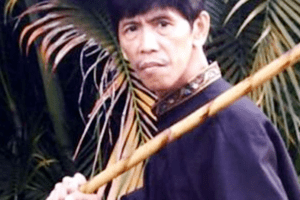The World of Eskrima, Arnis, and Kali.
In Filipino martial arts, a trio of terms often intertwine, leading to some confusion for newcomers to these arts. These terms are Eskrima, Arnis, and Kali, and understanding their distinctions is the first step in appreciating their shared heritage and unique characteristics.
Defining Eskrima, Kali, and Arnis.
Eskrima.
Eskrima is often associated with stick and knife fighting, gaining recognition both in the Philippines and the United States. It primarily focuses on weapon techniques, but what sets Eskrima apart is its inclusion of empty-hand skills, many of which have evolved from weapon-based techniques.
Eskrima is sometimes associated with “eskrima de baston,” which roughly translates to “stick fighting” in Filipino. However, “eskrima” itself doesn’t directly translate to “stick.” It’s more about the martial art itself rather than a specific translation.
Kali.
Kali serves as a comprehensive term within Filipino martial arts, encompassing not just stick and knife fighting but also various empty-hand techniques. It stands out for its versatility, covering various facets of combat.
Kali is a more complex term. While it’s a commonly used name for Filipino martial arts outside the Philippines, its direct translation in Filipino would be “kutsilyo,” which means “knife.” However, the term “kali” doesn’t have a direct translation to encompass the full scope of the martial art it represents, which includes various weapons and empty-hand techniques.
Arnis.
Arnis, predominantly used in the Philippines, especially in the northern regions, represents a more traditional style of stick fighting. While it shares core principles with Eskrima and Kali, Arnis embraces the nuances of its region and history, preserving a traditional approach to stick fighting.
Arnis is often referred to as “arnis de mano,” which translates to “harness of the hand” or “harness of the hand-to-hand combat” in Filipino. It emphasizes the art of using weapons like sticks, knives, and other implements.
Note: While Eskrima, Kali, and Arnis share some similarities as Filipino martial arts, they each have distinct features that set them apart. So, while there are resemblances, they’re not identical.
Exploring the World of Eskrima, Arnis, and Kali.
The realm of Filipino martial arts is both diverse and intriguing, weaving together shared origins and core principles. These arts, known for their emphasis on weaponry, also provide valuable self-defense techniques for situations when one finds themselves empty-handed. The techniques include headbutts, bites, pinches, eye gouges, and a variety of strikes using hands, feet, knees, and elbows. They reflect not just impressive martial artistry but also practicality, mirroring the adaptability of the Filipino people.
The journey of mastering these arts begins with grasping the fundamentals.
Dedication and practice are key to progressing towards mastery, opening the door to a world of advanced techniques, much like discovering hidden treasures.
Understanding Regional Distinctions.
In the Philippines, the choice of term varies by region. Arnis is favored in the northern Philippines, while Eskrima finds prominence in the central and southern islands. These regional distinctions add unique flavors to the world of Filipino martial arts.
In conclusion, the world of Filipino martial arts, embodied by Eskrima, Arnis, and Kali, reflects the adaptability and practicality of the Filipino culture. These arts offer a fascinating glimpse into a rich heritage and a comprehensive approach to self-defense, whether armed or unarmed. As you embark on your journey to master these arts, you’ll be weaving your own fabric of skills, one strike at a time. So, whether you choose to call it Arnis, Eskrima, or embrace the broader Kali perspective, you’re stepping into a world of artistry and fluidity that has captivated martial artists across the globe.
Thanks for reading.
Gert

